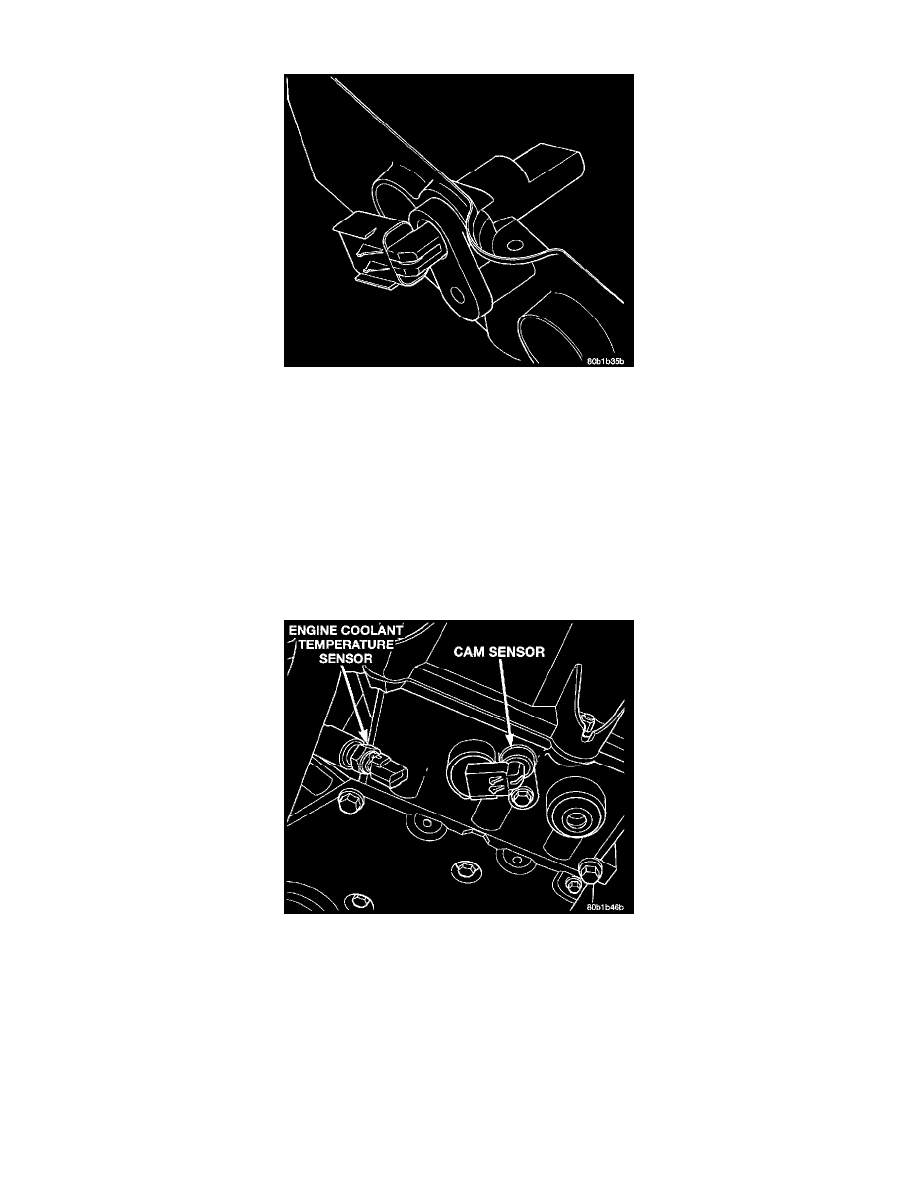Concorde V6-2.7L VIN R (1998)

Camshaft Position Sensor: Description and Operation
Fig 11 Camshaft Position Sensor
CAMSHAFT POSITION SENSOR
The camshaft position sensor provides cylinder identification to the Powertrain Control Module (PCM). The sensor generates pulses as groups of
notches on the camshaft sprocket pass underneath it. The PCM keeps track of crankshaft rotation and identifies each cylinder by the pulses
generated by the notches on the camshaft sprocket. Crankshaft pulses follow each group of camshaft pulses.
When the PCM receives one camshaft pulse after the long flat spot on the sprocket, cylinder number two crankshaft timing marks are next. After 3
camshaft pulses, the PCM knows cylinder four crankshaft timing marks follow. The PCM can synchronize on cylinders 1 or 4.
When metal aligns with the sensor, voltage goes low (less than 0.3 volts). When a notch aligns with the sensor, voltage spikes high (5.0 volts). As
a group of notches pass under the sensor, the voltage switches from low (metal) to high (notch) then back to low. The number of notches determine
the amount of pulses. If available, an oscilloscope can display the square wave patterns of each timing event.
Fig 13 Camshaft Position Sensor Location
The camshaft position sensor is mounted in the front of the timing case cover.
